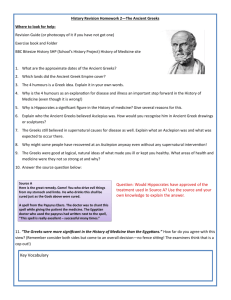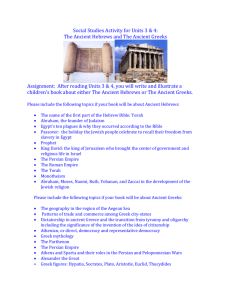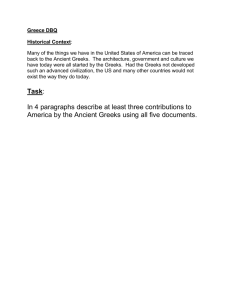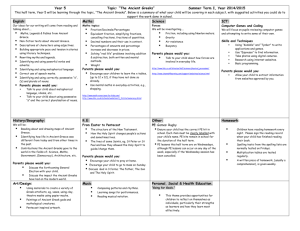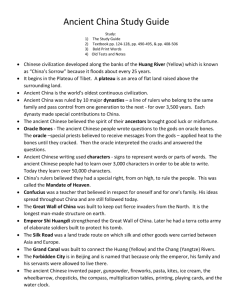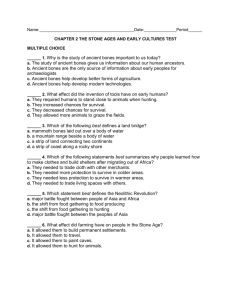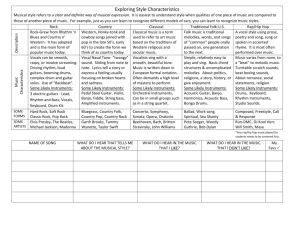Pre-Historic/Ancient Music
advertisement
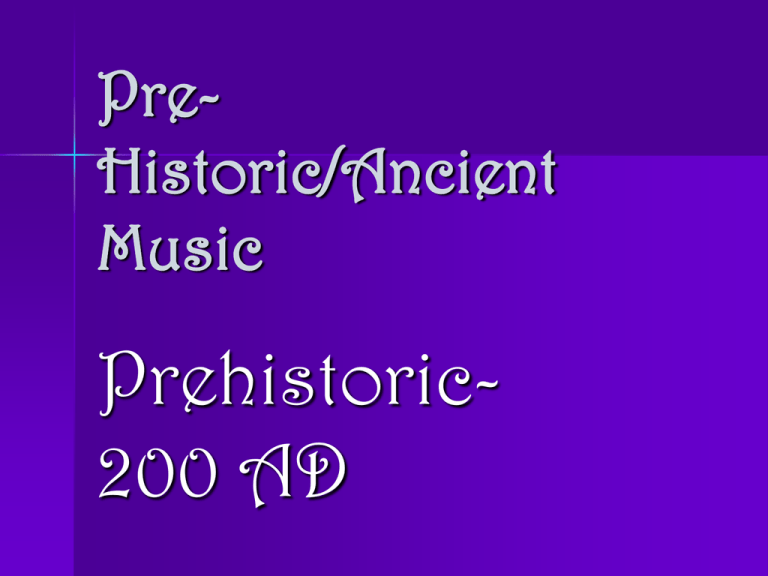
PreHistoric/Ancient Music Prehistoric200 AD Music Development Theories Match rhythmic sounds with human movement – chanting, clapping, stomping, etc. Imitate Nature – birds, ocean, rain, caves, etc. Music Development Theories Spontaneous vocal expression of emotion – anger, fear, anguish, joy, etc. communication – drums, trumpets, horns, bones Proof of Music Cave drawings Instruments have been found – whistles, drums, bones, sticks Oral and written stories that have been passed down Why Music was Created Accompany rituals or ceremonies – dances, births, deaths, hunting, marriage, religion, etc. Tell a story Express emotion and communicate Magical powers – thought to affect character, life and well-being Greeks Developed one of the first notation systems Created first music festival in 586 BC Greek words – music, rhythm, harmony, and cymbal Depicted instruments – lyre and kithara (small harp) Greeks Syrinx (panpipes) Tympanon (timpani) Hydraulus (water organ) Greeks Pythagoras, a famous Greek mathematician and scientist, related the pitch of a note to the length of the string. He also developed the idea of the musical interval (the distance between two pitches). Ancient Times In tombs in Persia, China, Babylon, India and in the pyramids of Egypt, musical instruments were buried with the dead. Some of these instruments can still be played Music in Ancient Times Vocal and instrumental music became important ways in which to honor the gods. Harps were made from bows by adding strings of several different lengths. Music in Ancient Times Pipes were made from hollow bones or bamboo. Holes were made in pipes to change the pitches.

